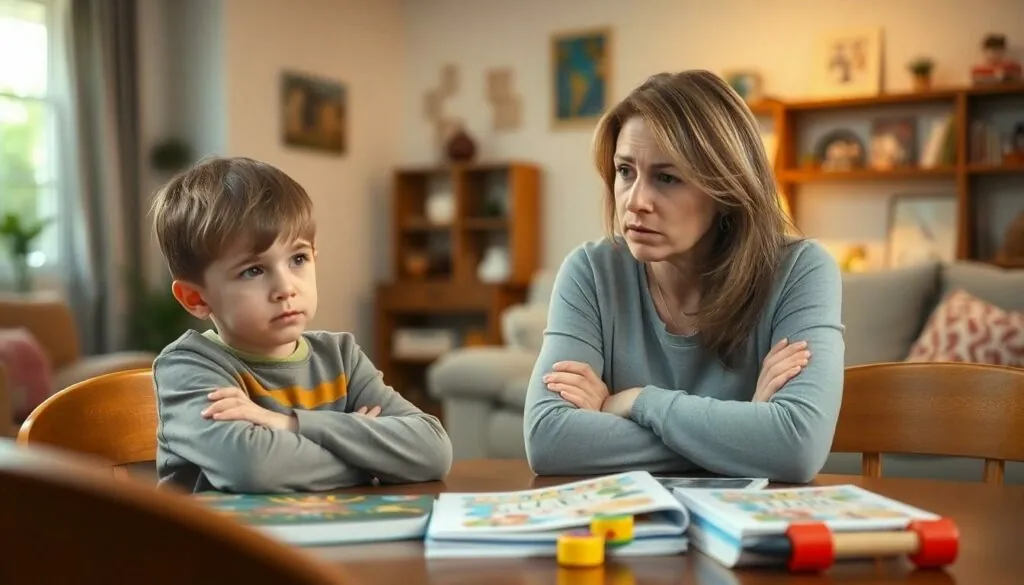Every parent knows the struggle: you lay down the law, but your child looks at you like you just recited the tax code. When consequences seem as appealing as a trip to the dentist, it’s time to rethink your approach. How do you discipline a child who’s mastered the art of indifference?
Fear not! This isn’t a hopeless case. With the right strategies, you can turn that apathetic attitude into a lesson learned. From creative consequences to engaging discussions, discover how to capture their attention and make discipline a little less daunting—and a lot more effective. After all, who said parenting can’t be a mix of laughter and learning?
Table of Contents
ToggleUnderstanding the Root Causes
Identifying the root causes of indifference in children is crucial for effective discipline. Various factors contribute to this apathy.
Emotional Factors
Emotional factors significantly influence a child’s attitude toward consequences. Children experiencing low self-esteem often do not care about their actions. Many struggle with anxiety or depression, which can lead to disengagement. Frustration frequently results in a lack of interest in outcomes. When children feel misunderstood, they may disregard discipline efforts completely. Providing emotional support can mitigate these issues, helping a child understand the importance of their actions.
Behavioral Patterns
Behavioral patterns define how children react to their environment. Children displaying defiance often ignore consequences. Repetitive, negative behaviors indicate a potential lack of understanding about cause and effect. It’s common for children to mimic peers, regardless of the outcomes associated with their actions. Routine exposure to inconsistent discipline allows patterns of indifference to grow stronger. Identifying these patterns aids in creating tailored strategies that address specific behaviors effectively.
Effective Discipline Strategies

Establishing effective discipline strategies involves a blend of consistent boundaries and positive reinforcement. Parents can find success by applying targeted methods that reshape their child’s attitude.
Consistent Boundaries
Setting consistent boundaries creates a sense of security for children. Children thrive when expectations are clear and consequences are predictable. Define rules clearly and state the consequences for breaking them. Enforce these consequences every time a rule is broken. Consistency helps children understand that actions have outcomes. When they see no deviation in responses from parents, they grasp the seriousness of their behavior. Parents may also benefit from communicating boundaries in a calm manner. This approach prevents emotional reactions that could undermine the message. With steady boundaries, children feel more accountable for their actions.
Positive Reinforcement
Positive reinforcement motivates children to engage in desired behaviors. Acknowledging efforts and achievements encourages them to repeat those actions. Parents can use verbal praise, rewards, or privileges to reinforce good behavior. For example, when a child completes homework without prompting, express appreciation or provide a small reward. Specific comments like “I noticed how well you did your chores today” make reinforcement impactful. Rewards don’t have to be material; they can include extra playtime or a movie night. Building a habit of recognizing positives fosters a more engaged child. As parents emphasize good behavior, the likelihood of repeat actions increases, reducing indifference to consequences.
Communication Techniques
Effective communication fosters understanding and connection between parents and their children. Utilizing proper techniques can transform discipline from a power struggle into a collaborative process.
Active Listening
Active listening builds trust and shows children their feelings matter. Encourage children to express their thoughts and emotions without interruption. Respond to their concerns with empathy, which helps them feel valued. Reflecting back what they say can clarify understanding. When parents acknowledge their child’s perspective, it minimizes defensiveness and opens avenues for meaningful dialogue. This technique allows them to feel heard, increasing the likelihood of cooperation. Implementing these practices can gradually transform a child’s indifferent stance toward more engaged conversations.
Constructive Feedback
Constructive feedback focuses on guiding children toward better behaviors. Begin by identifying specific actions rather than generalizations. Instead of saying “you always mess up,” a parent can state “you didn’t finish your homework today.” Provide suggestions on how to improve, which reinforces learning. Highlight aspects of their behavior that demonstrate potential. Recognizing even small efforts can boost a child’s confidence. When feedback is balanced with positive reinforcement, it enhances receptiveness to future discussions, fostering an environment conducive to personal growth.
Additional Resources
Parents navigating the challenge of disciplining indifferent children can find valuable support in various resources. Utilizing these can enhance effective communication and discipline techniques.
Professional Support
Seeking professional support can be beneficial for parents. Therapists and child psychologists specialize in addressing behavioral issues. They can provide insights into emotional challenges that often underlie indifference. Additionally, family counseling offers tools to strengthen communication within the household. Engaging with professionals equips parents to apply the most effective strategies tailored to their child’s needs, improving overall behavior management.
Educational Materials
A variety of educational materials exist to help parents address discipline challenges. Books focused on positive discipline techniques offer practical advice and proven strategies. Online courses and webinars provide interactive learning experiences, helping parents to refine their approaches. Furthermore, parenting blogs and forums allow sharing of experiences and insights from other parents. These resources supply guidance on building effective routines and fostering emotional intelligence, supporting a more engaging environment for children.
Disciplining a child who shows indifference can feel overwhelming but it doesn’t have to be. By understanding the emotional and behavioral factors at play parents can tailor their approaches for better outcomes. Consistent boundaries combined with positive reinforcement create an environment where children learn to value their actions.
Effective communication plays a key role in fostering connection and trust. When parents actively listen and respond empathetically children are more likely to engage in meaningful discussions. This not only encourages accountability but also nurtures personal growth.
Utilizing available resources can further empower parents on this journey. With the right strategies and support parents can transform indifference into engagement paving the way for a more harmonious family dynamic.






